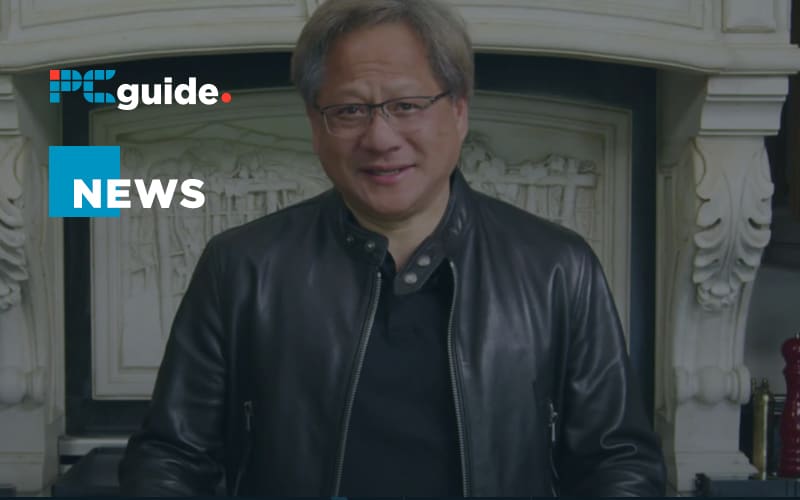
Nvidia became the latest tech giant to hold its 2020 keynote presentation online. Presented by founder and CEO Jensen Huang from the comfort of his own Californian home, Huang started by thanking all the keyworkers and first responders fighting COVID-19 before highlighting how Nvidia is helping with the battle to find a vaccine and help deliver medication with robots.
Using their CryoSPARC technology Nvidia was the first company to build a 3D image of the CoV-SARS-2 Spoke Protein and have since lent 1000s of hours of computing time into the search for a solution.
“We build computers to solve problems that normal computers cannot” Huang pointed out before moving on to a presentation on the company’s AI technology and Accelerated Computing.
Huang went on to explain why Nvidia bough Mellanox, a high-speed networking company before bringing one of their ridiculously high-specced ethernet switches onto his kitchen work surface and went on to explain how the DPU (data processing unit) will become the next big thing in computing development.
In the last year, Nvidia has released 50 new SDKs to help developers across many spectrums from graphics design to healthcare and worked with 1.8 million developers.
Five and a half million developers downloaded the CUDA SDK alone.
“We have new applications I am excited to show you – a new chip and new systems,” Huang enthused.
He then went on to describe DLSS 2.0 – Deep-Learning Super Sampling, a technique utilizing AI to predict what a low-resolution image would look like scaled up. The AI demo showed how the Nvidia neural network rendered a 720p image to a 1080p image. The example showed that AI technology actually does a better job of rendering a 1080p image than doing it natively on the card.
“It’s an amazing breakthrough”, Huang said before showing the RTX Minecraft video that amazed the world a few weeks ago.
“We have made realtime Raytracing 10 years before anybody thought it was possible.”
Later in the show, Huang demonstrated Nvidia Jarvis for Conversational AI – a new application framework that recognizes vision and sound to power AI workflows.“Conversational AI is one of the most challenging inference tasks because it requires interactive AI performance.
“Jarvis allows us to connect to the Omniverse (Nvidia’ AI cloud network effectively) and create a 3D chatbot. It takes an audio input and has learned how to animate a geometric mesh to animate facial expressions while talking.
The next demo was a bit on the stunning side as an Nvidia employee performed a rap and the face model generated the facial movements in time with the lyrics.
Next came Misty, an AI-powered chatbot in the shape of a blue teardrop – A Clippy for the new generation. Huang proceeded to have a conversation with Misty, first with the pair of them introducing themselves before Misty launched into a weather forecast. After this, a little chat followed about which was the hottest and coldest cities in the world, which Mistry rattled off with ease using the internet.
When asked who made her/it/whatever Misty replied, “I am created by the wonderful scientists at Nvidia”, as things got a touch creepy.
Jarvis looks like it is set to be a big thing in the character design and chatbot areas and we could be set for a Misty-esque overload in the coming years.
“Conversational AI is going to automate conversations and make it possible for us to deploy automated services in all kinds of new applications, whether its video conferencing, call centers, or smart speakers.”
AI is obviously Nvidia’s next big thing and equally impressive as the Jarvis technology was the final section of the Keynote where Huang dealt with autonomous vehicles showing a tracking demo followed by the announcement that Nvidia Ampere architecture is coming to autonomous vehicles and showed off an automated vehicle demo with screens bedecked with an Nvidia Drive logo.
“It is our belief that everything that moves will eventually become autonomous,” Huang said, “cars, passenger cars, taxis, trucks, delivery bikes. Our architecture will span this entire range.”
If you want to watch the Keynote videos for yourself and be more than a little reminded of what went wrong in the Terminator movies, you can find them on Nvidia’s YouTube channel
